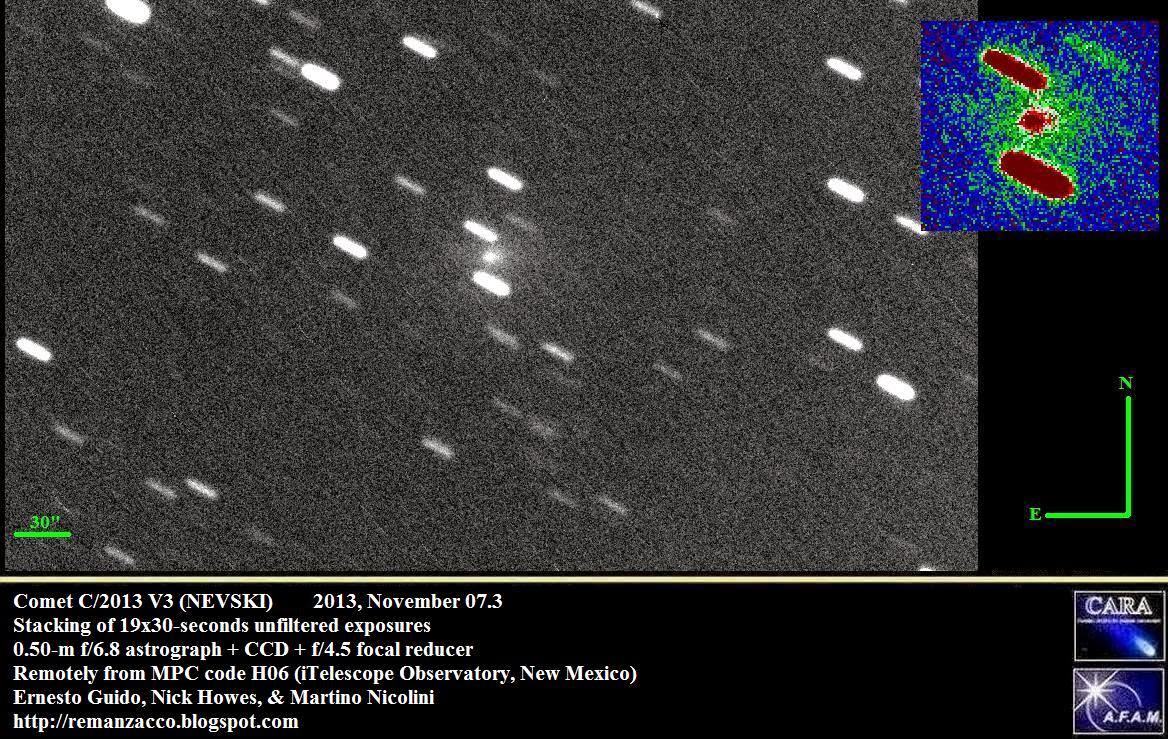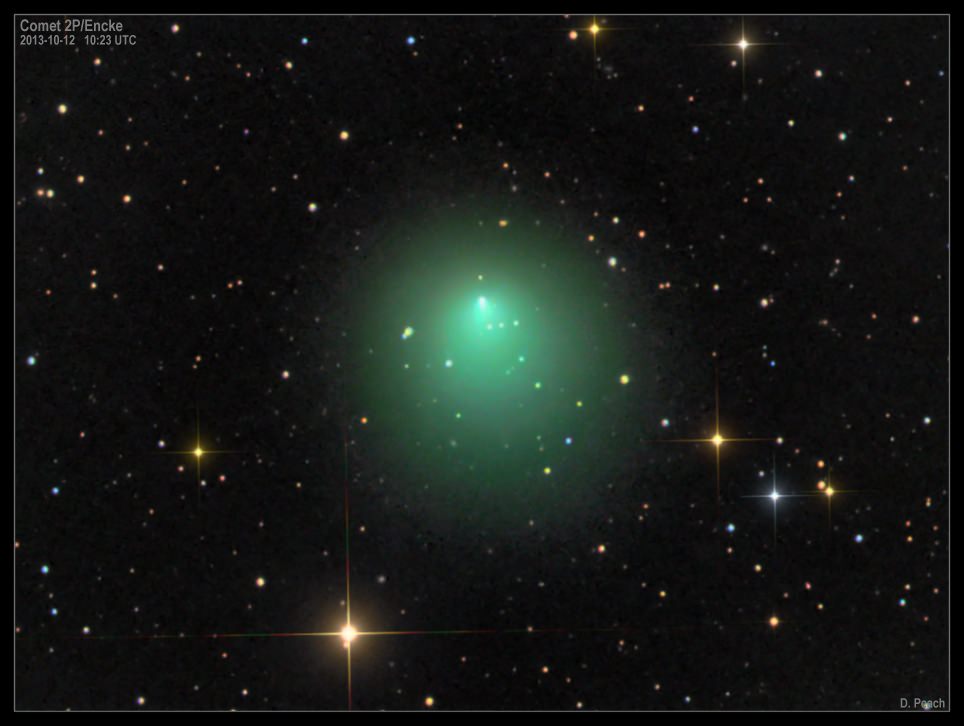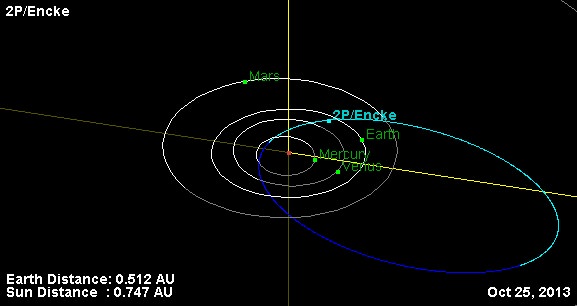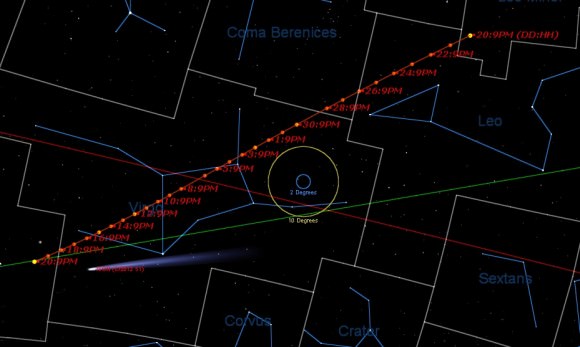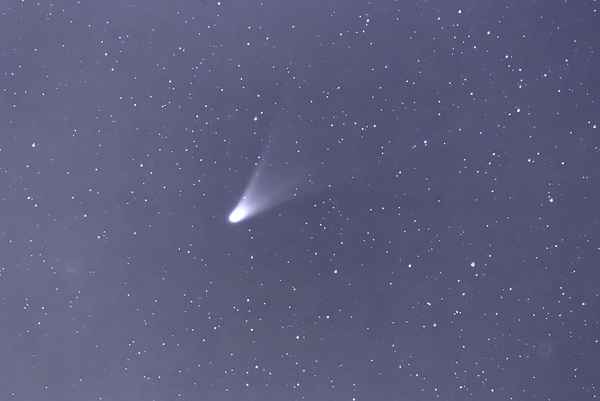Is 2013 truly the “Year of the Comet?” Perhaps “Comets” might be a better term, as no less than five comets brighter than +10th magnitude grace the pre-dawn sky for northern hemisphere observers.
Comet C/2013 V3 Nevski has just brightened up 6 magnitudes — just over a 250-fold increase in brightness — and now sits at around magnitude +8.8. Comet Nevski was just recently discovered by Vitali Nevski using a 0.4 metre reflecting telescope 12 days ago on November 8th. If that name sounds familiar, it’s because Nevski discovered the comet from the Kislovodsk observatory located near Kislovodsk, Russia which is part of the International Scientific Optical Network survey which located comet ISON last year. In fact, there was some brief controversy early on in its discovery that Comet C/2012 S1 ISON should have had the moniker Comet Nevski-Novichonok.
At the time of discovery, Comet Nevski appeared to be nothing special: shining at magnitude +15.1, it was well below our +10 magnitude limit for consideration as “interesting,” and was projected to linger there for the duration of its passage through the inner solar system. About a dozen odd such comet discoveries crop up per year, most of which give astronomers a brief pause as the orbit and size of the comet become better known, only to discern that they’re most likely to be nothing extraordinary.
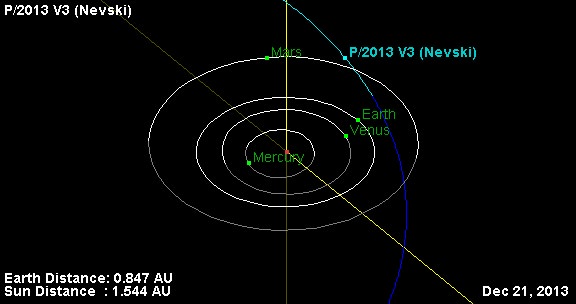
Such was to be the case with Comet Nevski, until it suddenly flared up this past weekend.
Observer Gianluca Masi caught Comet Nevski in outburst, using a Celestron C14 remotely as part of the Virtual Telescope 2.0 project:
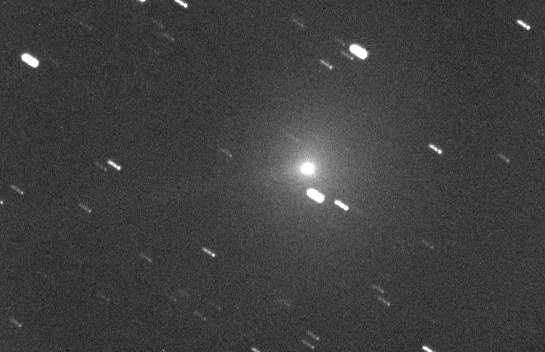
You’ll note that Comet Nevski shows a small, spiky tail on the brief exposure. As of this writing, it currently sits at between magnitudes +8 and +9 and should remain there for the coming week if this current outburst holds.
Comet Nevski is well placed for northern hemisphere observers high in the morning sky, and will spend the remainder of November and early December crossing the astronomical constellation of Leo.
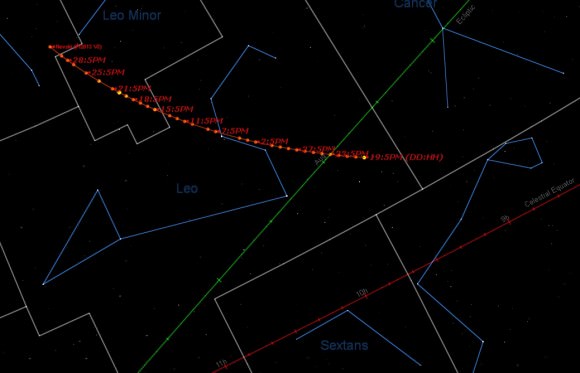
Here’s a blow-by-blow rundown on noteworthy events for this comet for the remainder of 2013:
November 23rd: Passes the +5.3 magnitude star Psi Leonis and crosses north of the ecliptic plane.
December 1st: Passes +3.4 magnitude star Eta Leonis.
December 6th: Passes +4.8 magnitude 40 Leonis and the bright +2nd magnitude star Algieba.
December 15th: Crosses into the constellation Leo Minor.
December 17th: Passes near the +5.5th magnitude star 40 Leonis Minoris.
December 21st: Passes closest to Earth, at 0.847 Astronomical Units (A.U.s), or 126 million kilometres distant.
December 30th: Passes into the constellation Ursae Majoris.
Note that a “close pass” denotes a passage of the comet within a degree of a bright or interesting object.
The orbit of Comet Nevski is inclined 31.5 degrees relative to the ecliptic, and it will be headed for circumpolar for observers based in high northern latitudes as it dips back down below our “interesting” threshold of magnitude +10 in early 2014.
This comet passed perihelion on October 27th, 2013 just over a week prior to discovery. Comet Nevski is Halley-type comet, with a 27.5 year orbit.
So, looking at the “Comet Scorecard,” we currently have:
Comet C/2012 X1 LINEAR: Still undergoing a moderate outburst at magnitude +8.2, very low to the north east for northern hemisphere observers at dawn in the constellation Boötes.
Comet 2P/Encke: Reaches perihelion tomorrow at 0.33 AU’s from the Sun, shining at magnitude +7.7 near Mercury in the dawn sky but is now mostly lost in the Sun’s glare.
Comet C/2013 R1 Lovejoy: is currently well placed in the constellation Ursa Major crossing into Canes Venatici in the hours before dawn. Currently shining at magnitude +5.4, Comet R1 Lovejoy is visible to the unaided eye from a dark sky site. We caught sight of the comet last week with binoculars, looking like an unresolved globular cluster as it passed through the constellations of Leo and Leo Minor.
And of course, Comet C/2012 S1 ISON: As of this writing, ISON is performing up to expectations as it approaches Mercury low in the dawn shining at just above +4th magnitude. We’ve seen some stunning pictures as of late as ISON unfurls its tail, and now the eyes of the astronomical community will turn towards the main act: perihelion on November 28th. Will it fizzle or dazzle? More to come next week!
The recent outbursts of Comets X1 LINEAR and V3 Nevski are reminiscent of the major outburst of Comet Holmes back in 2007. Of course, the inevitable attempts to link these outbursts to the current sputtering solar max will ensue, but to our knowledge, no conclusive correlations exist. Remember, the outburst from Comet Holmes occurred as we were approaching what was to become a profound solar minimum.
Also, it might be tempting to imagine that all of these comets are somehow related, but they are in fact each on unique and very different orbits, and only appear in the rough general direction in the sky as seen from our Earthly vantage point… a boon for dawn patrol sky watchers!
Got pics? Send ‘em in to Universe Today!

